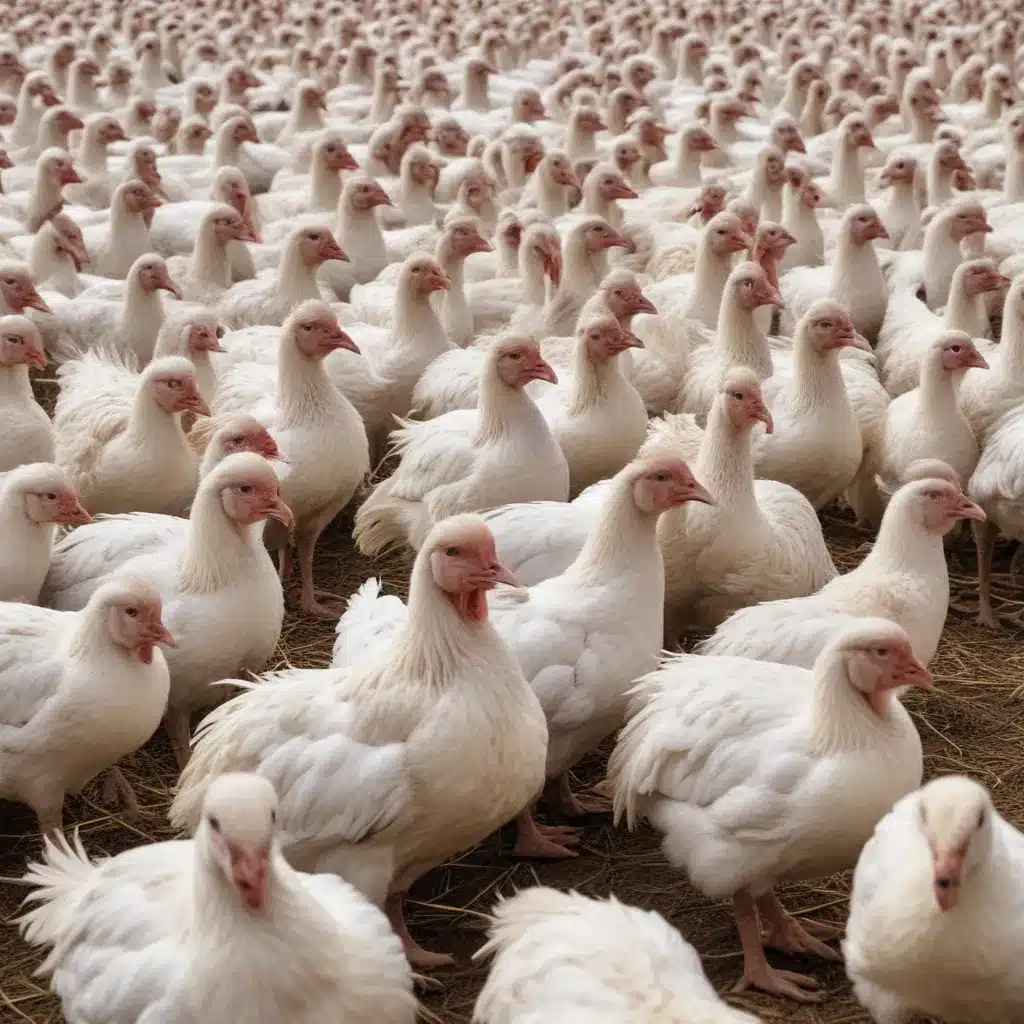
Feathered Fortitude: Protecting Your Flock from Environmental Hazards
As an experienced avian caretaker, I’ve seen firsthand the incredible resilience and adaptability of our feathered friends. From the harsh, windswept tundras of the north to the sun-baked deserts of the south, birds have evolved remarkable strategies to thrive in even the most challenging environments.
Anatomy and Physiology of Feathered Friends
At the heart of an avian’s ability to weather environmental extremes lies its unique anatomy and physiology. The intricate structure of a bird’s feathers is a true marvel of natural engineering. Each individual feather is composed of a central shaft called the rachis, with countless barbs and barbules extending outward. This complex arrangement not only provides insulation and waterproofing, but also enables the precise control of airflow for efficient flight.
The avian respiratory system is another evolutionary masterpiece. Instead of the alveolar sacs found in mammalian lungs, birds possess a series of interconnected air sacs that circulate oxygen with incredible efficiency. This, combined with their high metabolic rates, allows them to maintain core body temperatures even in the face of extreme cold or heat.
Adaptations to Climate Extremes
To survive in environments that would quickly overwhelm a human, birds have developed an array of remarkable adaptations. In the Arctic, species like the snowy owl and gyrfalcon sport thick, down-filled plumage that traps body heat and shields them from biting winds. Meanwhile, desert-dwelling birds like the roadrunner and cactus wren have evolved the ability to conserve precious water, excreting uric acid instead of water-heavy urea.
Some birds even possess the remarkable capacity to temporarily lower their metabolic rates and enter a state of torpor, similar to hibernation, during harsh conditions. This “shut down” mode allows them to dramatically reduce their energy needs until more favorable times return.
Monitoring for Hazards
As avian caretakers, it’s our responsibility to closely monitor our feathered charges for any signs of environmental stress or distress. Regular observation of their plumage, behavior, and feeding patterns can provide early warning signs of potential issues.
Are the birds’ feathers appearing ruffled or disheveled? This could indicate exposure to cold, wind, or rain. Are they huddling together or seeking out sheltered areas more often? This may signal a need for additional protection from the elements.
Monitoring water sources and food supplies is also crucial. Ensure that your birds have access to clean, fresh water at all times, and that their dietary needs are being met, especially during periods of extreme weather or seasonal changes.
Proactive Defense Strategies
Anticipating and mitigating environmental threats is key to keeping your flock healthy and thriving. Consider constructing sturdy, well-insulated coops or aviaries that can shield your birds from the elements. Incorporate features like adjustable ventilation, supplemental heating or cooling, and ample roosting space to allow your feathered friends to regulate their own comfort.
Diversifying your birds’ habitat by incorporating a variety of plant life, perches, and hiding spots can also enhance their ability to seek refuge and engage in natural behaviors. This not only promotes their well-being, but also helps to reduce stress and the risk of injury or illness.
Emergency Response Protocols
Despite our best efforts, there may be times when unexpected environmental challenges arise, requiring swift and decisive action. Develop a comprehensive emergency plan that outlines the steps to be taken in the event of severe storms, power outages, or other calamities.
Ensure that you have backup power sources, emergency supplies, and a designated safe space for your birds to shelter. Familiarize yourself with the signs of hypothermia, heatstroke, and other climate-related health issues, and be prepared to provide immediate first aid or veterinary care if needed.
Enriching the Coop Ecosystem
Creating a thriving, balanced environment for your birds is essential for their long-term resilience. Encourage natural behaviors like foraging, dust bathing, and social interaction by providing appropriate substrate, perches, and hiding spots. Introduce a variety of enrichment items, such as fresh produce, puzzle feeders, and novel objects, to keep your flock mentally stimulated and engaged.
Fostering a strong sense of flock cohesion can also contribute to your birds’ overall well-being. Observe the dynamics within your group and intervene if you notice signs of bullying or social stress. Introduce new members gradually and provide ample space and resources to minimize competition and promote harmony.
Nutrition and Hydration for Optimal Health
A balanced, species-appropriate diet is crucial for your birds’ ability to withstand environmental challenges. Ensure that they have access to a variety of high-quality proteins, carbohydrates, fats, vitamins, and minerals to support their energetic lifestyles and robust immune systems.
Maintaining a clean, reliable water source is equally important. Replace and refresh your birds’ water daily, and consider installing automatic waterers or misters to prevent contamination and ensure a consistent supply, even during power outages or extreme weather.
Supplements tailored to your birds’ specific needs can also be a valuable tool in promoting resilience. Products containing antioxidants, electrolytes, and immune-boosting compounds can help your feathered friends better cope with stressful environmental conditions.
In the ever-changing world we inhabit, the resilience and adaptability of our avian companions is truly awe-inspiring. By understanding their unique physiology, anticipating potential threats, and creating enriching, supportive environments, we can help ensure the long-term health and well-being of our feathered friends, no matter the challenges they may face. For more information and resources on avian care, be sure to visit Mika Birds Farm.


